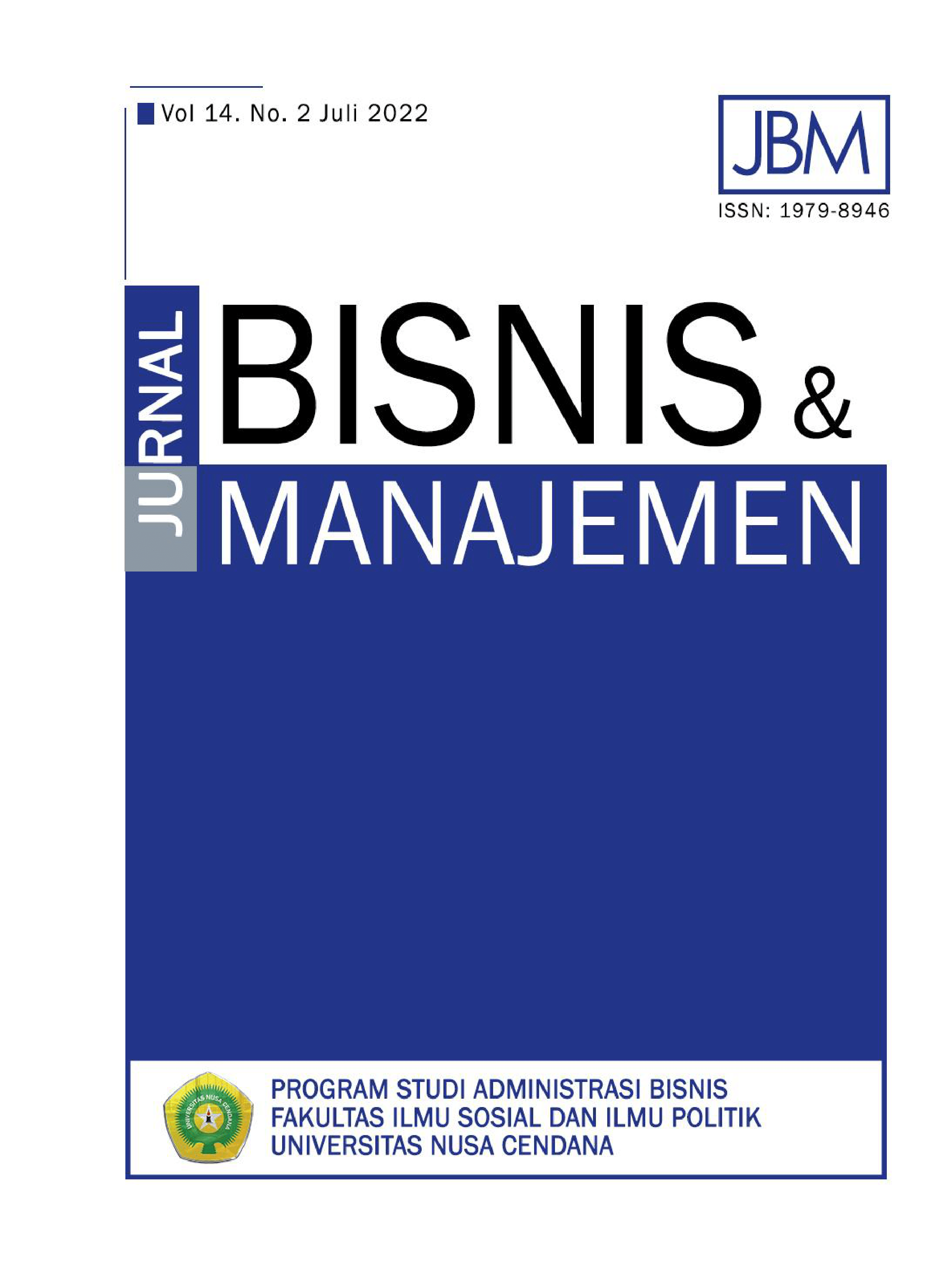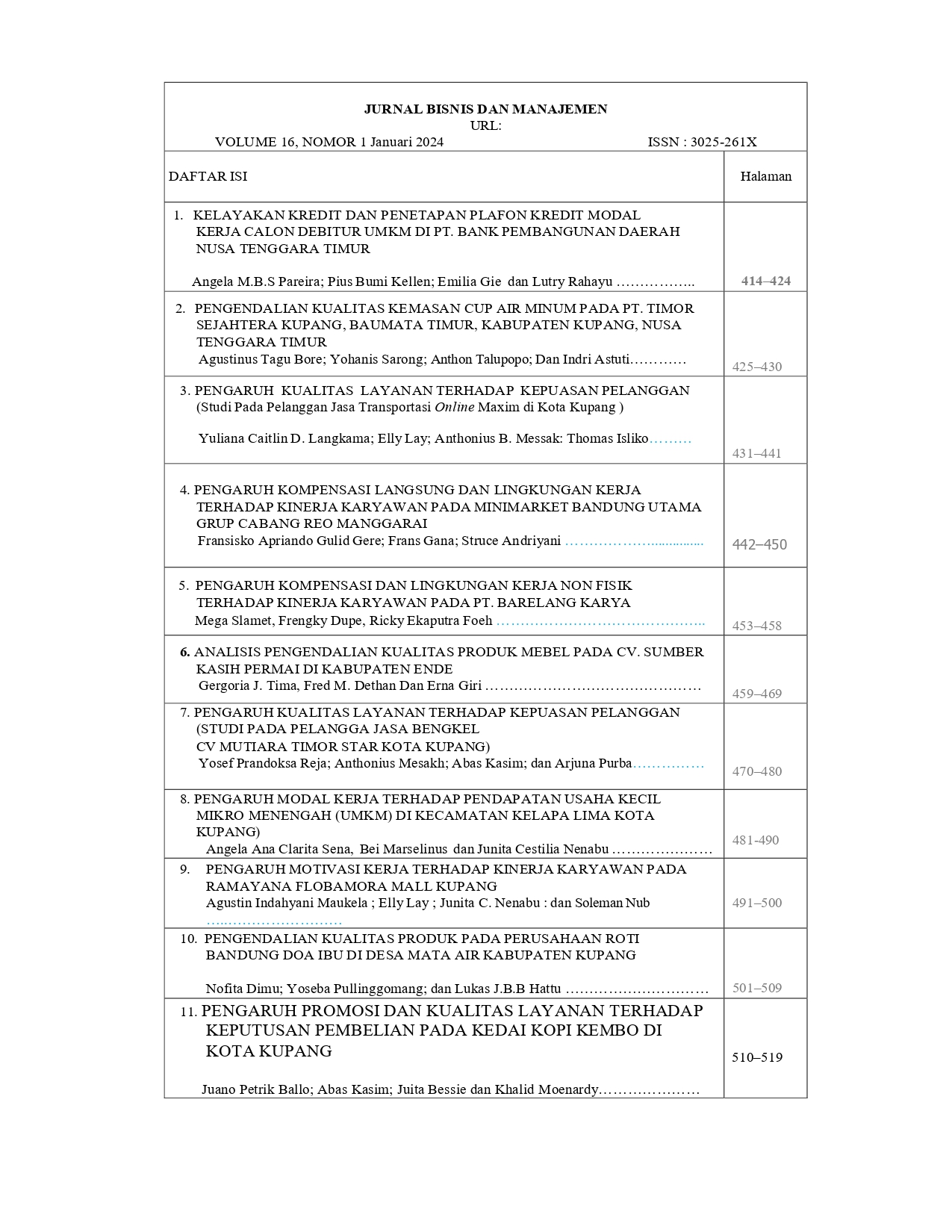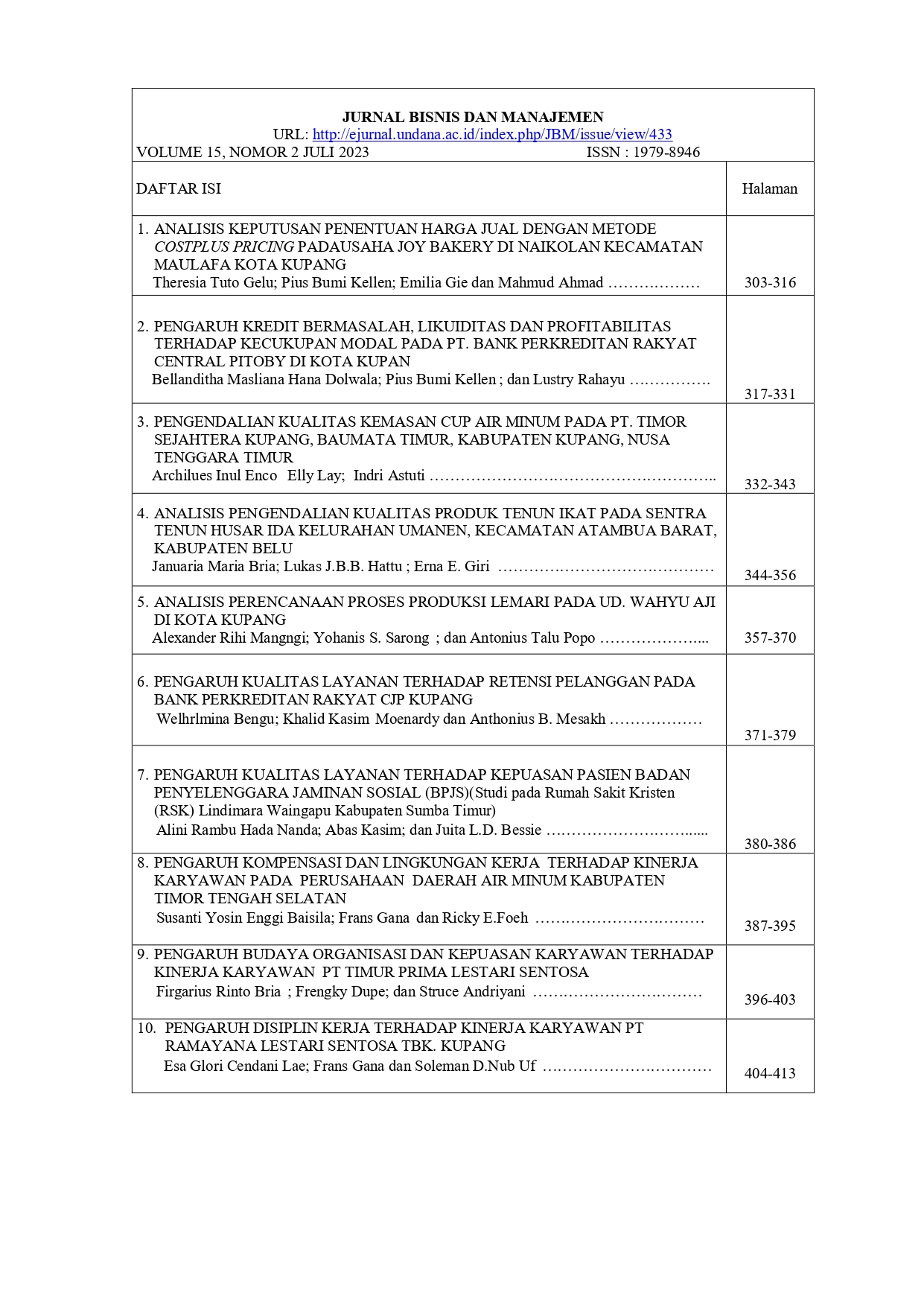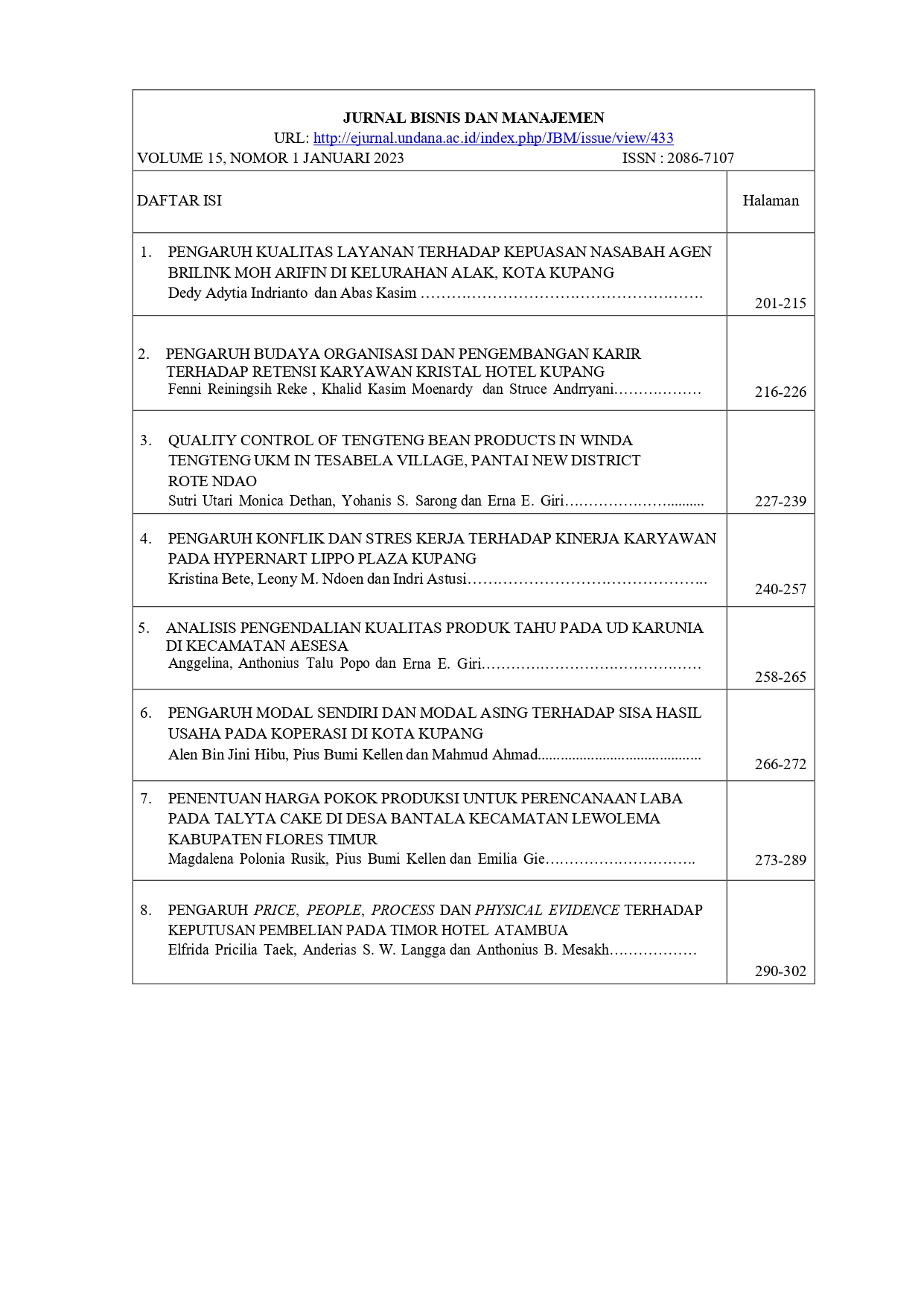ANALISIS KEPUTUSAN PENENTUAN HARGA JUAL DENGAN METODE COST PLUS PRICING PADA USAHA TAHU TEMPE UD. RAHAYU DI LARANTUKA KABUPATEN FLORES TIMUR
Abstract
The formulation of problems in this study is (1) How to determine the selling price using the cost plus pricing method of the full costing approach, (2) How to determine the selling price using the cost plus pricing method of variable costing approach, (3) How is the difference between the calculation of the company's selling price and the cost plus pricing method of the full costing and variable costing approach ? The purpose of this study is to: (1) Know the determination of selling prices with the cost plus pricing method of the full costing approach, (2) Know the determination of selling prices with the
cost plus pricing method of the variable costing approach, (3) Know the difference in the calculation of selling prices between companies with the cost plus pricing method of the full costing and variable costing approaches. The type of research used in research is case study research with a quantitative descriptive approach. The study found that: (1) The selling price of Tofu and Tempe products with the cost plus pricing method of the full costing approach resulted in a higher price, where this selling price has included all elements of production costs consisting of raw material costs, direct and indirect labor costs, fixed factory overhead costs and variable factory overhead costs plus non-production costs and mark ups. Into the calculation of the selling price. (2) The selling price of Tofu and Tempe products with the method of cost plus pricing variable costing approach results in a lower price, where this selling price has included variable production costs consisting of raw material costs, direct labor costs, and variable factory overhead costs plus non-production costs and mark ups into the calculation of the selling price. (3) The selling price for Tofu products set by UD Rahayu is higher than the selling price of the cost plus pricing method approach full costing and variable costing. The selling price for Tempe products set by the company is lower than the selling price of the cost plus pricing method approach full costing and variable costing. This is because UD Rahayu has not done the calculation of Factory Overhead Costs precisely. The company also has not included tax costs and vehicle oil costs into the non-production cost element in the calculation of the selling price so that it affects the selling price set by the company.

 Maria Delastrada Titi Doren(1*)
Maria Delastrada Titi Doren(1*)





